Most people can’t tell the difference between a flyer and a brochure. I couldn’t either, until a few years back. It’s usually not a big deal, unless you’re in marketing, where not knowing the difference can cost you money and credibility (or your job, if your boss is a bit dramatic).
We often use the terms interchangeably, but flyers and brochures are built for very different jobs. In this post, I’ll break down the differences between a flyer and a brochure, show when each format works best and give you clear direction so your next campaign is successful.
Key differences between a flyer and a brochure
Flyers work best for flash sales and quick promos, such as a gym offering 40% off memberships during Thanksgiving. Brochures, on the other hand, are better-suited for detailed storytelling and long-term decisions, like a real estate agency showcasing property listings, testimonials and financing options.
You shouldn’t choose one over the other based on looks or your personal preference. The difference often lies in the intent and the outcome you want out of each of them.
Here’s a quick comparison between the two:

What is a flyer?
A flyer is a single-page marketing piece meant to be scanned fast. Think of it as an announcement on a sheet of paper, printed or digital, that’s designed to catch the eye immediately.
- It’s usually a one-sided or two-sided flat sheet. Most often printed on standard 8.5″ × 11″ paper.
- The goal is immediate attention: advertise a sale, a gig, a quick event. Give it to hundreds or post it publicly.
- Flyers are cheap per unit and disposable. You print fast and move on.
Research shows that 79% of people read or scan the flyers they get, and nearly 45% hang on to them for future use.
Here is an example of a flyer template created to promote an event (with irresistible perks):

Notice the minimal text, bright color choice and the use of big bold fonts to attract attention. Exactly why a flyer is hard to miss.
“A well-designed marketing brochure is one of the most effective ways of reaching large numbers of people quickly and efficiently.”
From Clockwork Print blog
Here’s another example template that doubles as a sales promo and a product catalog:

You don’t have to design a flyer from scratch, especially if you’re not a professional designer. A better alternative is to choose the best flyer design software, pick the right flyer template and design one within just a few minutes.
For a faster head start, try Venngage’s AI Flyer Generator.
What is a brochure?
You can say a brochure is a longer, more thorough version of a flyer. It’s a multi-fold or multi-page material meant to inform and persuade.
- It folds. Common formats include tri-fold, bi-fold, z-fold, gate-fold or even saddle-stitched booklets.
- It’s built to be read thoroughly, not just glanced at. It uses heavier paper stock, UV or gloss coating, often includes visuals and has organized sections.
- You hand it to people that you know are already interested in what you offer. But don’t expect them to convert immediately. They might keep the brochure on desks, in hands or in handbags for days or weeks, until they make up their minds.
- Brochures are more common in B2B, retail and tourism. You’ll see them at trade shows, in-store as catalogs or at visitor centers to showcase attractions and itineraries.
81% of marketers say print assets, like brochures, remain a core part of their marketing strategy.
You’ve probably picked up a tri-fold brochure like the one below more times than you can remember.
The template below, for instance, is perfect for showcasing local government services, community resources, and essential contact information in a clear, organized format:
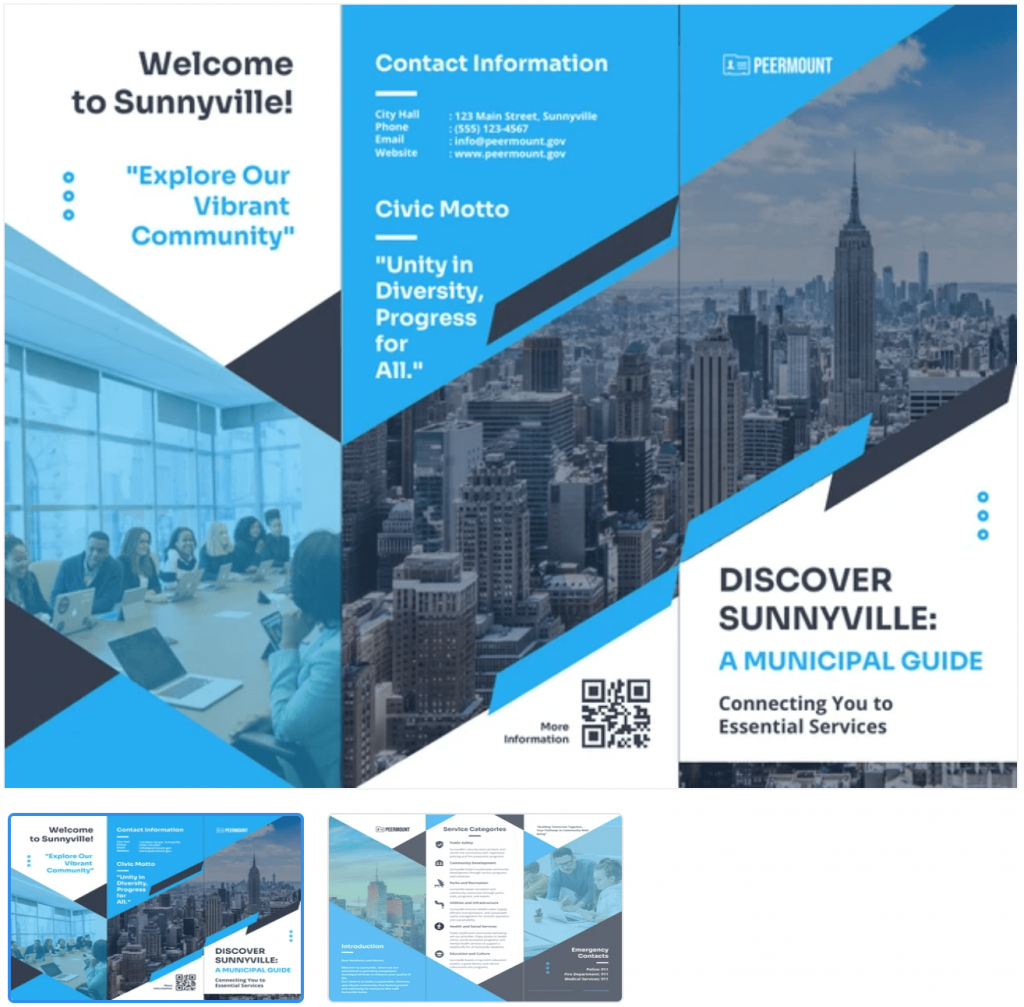
But bi-fold brochures like the one below aren’t rare either:
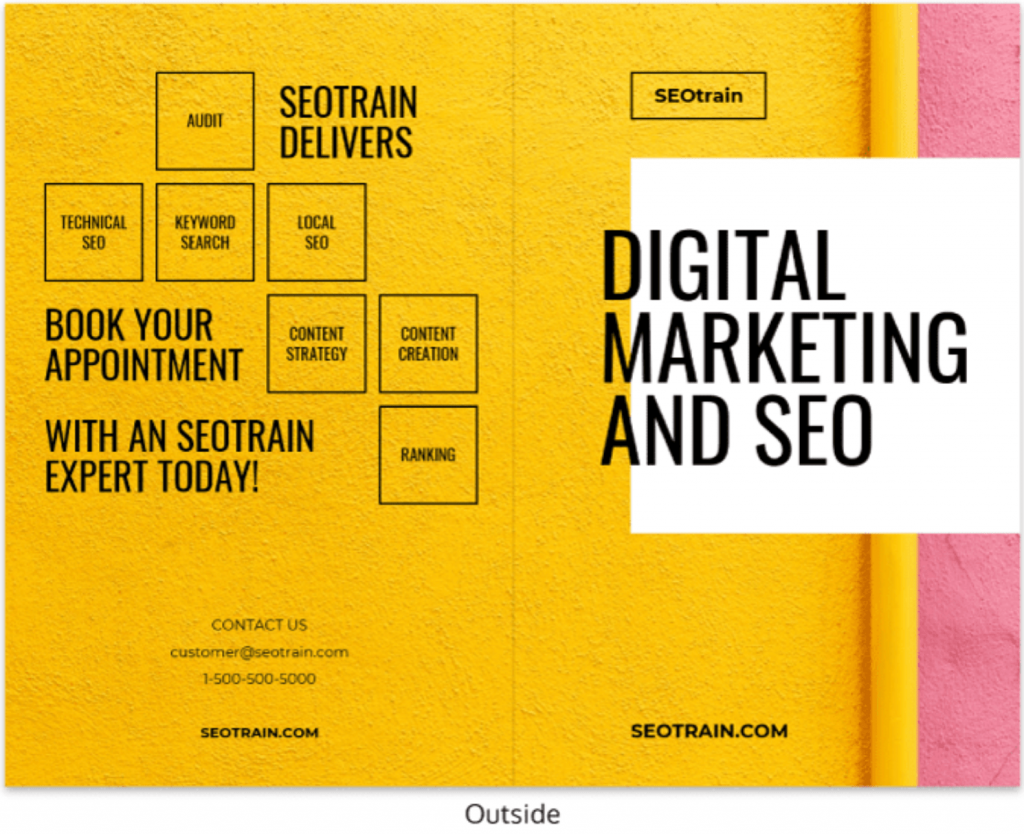
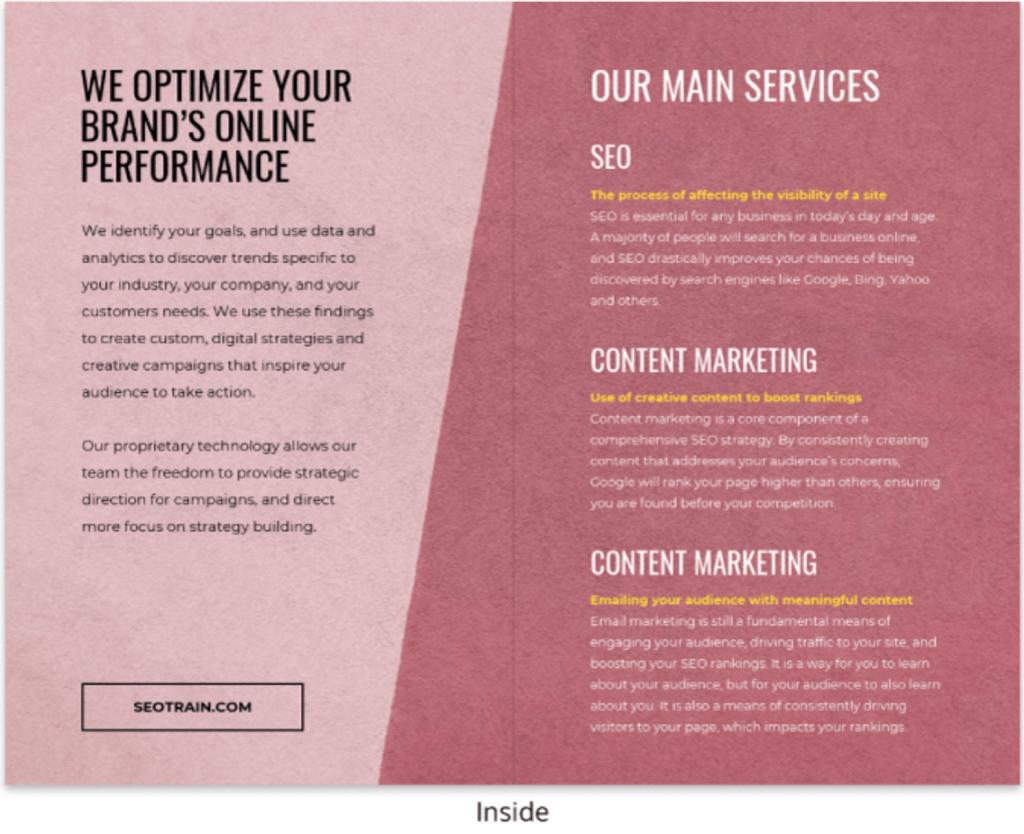
It’s a perfect bi-fold brochure for consulting firms or agencies that want to present services with bright visuals and bold typography, without starting from scratch.
Pro tip: Creating a brochure from scratch can be equally daunting, especially if you haven’t designed one before. Start with good brochure design software, choose the brochure template you like and you can create one in no time. Want it faster? Try Venngage’s AI Brochure Generator.
When to use a flyer vs a brochure
You shouldn’t choose between a flyer and a brochure just because one looks nicer. The right pick depends on your goal.
For example, do you want to drive a ton of foot traffic to an event next week? A flyer grabs attention quickly and costs less.
Flyer marketing can produce big results on a small budget. You can save on design costs by doing it yourself; plus printing and distribution costs are minimal.
From Printivity Insights
But if you’re selling something that demands more money or time commitment, a brochure is a better bet. It builds trust with visuals, testimonials and detailed information that a flyer can’t carry.
A tattoo shop in a strip mall might hand out a flyer with a 15% discount to draw a crowd over the long weekend. But if that same shop opens a new location and wants locals invested for the long run, it’s better off sharing a multi-fold brochure with the story, menu, map and hours.
Here are some very specific scenarios for you to understand when to choose what:
Use a flyer when:
- You’re announcing a local event, a sale or a limited-time offer and need to get the message out fast.
- You’re working with a tight budget and need something inexpensive.
- You want something that catches people’s eyes fast; people typically scan flyers in seconds.
- Research shows print works better for retention than digital. For instance, 82% of people say they understand and remember information better when they read it on paper and 77% prefer print over digital.
The tactile quality of print marketing materials taps into a consumer’s touch memory, which has quickly proven to be a long-lasting form of emotional connection.
Emma Davis, from the 4over4 blog
Use a brochure when:
- You need to educate prospects or give them something to refer back to. People don’t just skim brochures; they read them from cover to cover.
- You want to showcase multiple offerings or services in detail. Brochures give you space to organize sections, highlight testimonials, add multiple visuals or elaborate on technical info.
- Brochures signal seriousness and investment in quality. You’re in a trade show, client meeting or any B2B environment where people expect polished, info-rich materials.
Pamphlets, booklets and ads: What’s the difference?
Flyers and brochures get most of the attention, but they’re not the only formats people mix up. You’ve probably heard “pamphlet,” “booklet,” or even “ad” used interchangeably.
But they’re not the same thing, and knowing the difference can save you from using the wrong format (and the embarrassment that comes with it) in front of the wrong audience.
Pamphlet vs brochure vs flyer
These three terms often get lumped together. A pamphlet is essentially a small booklet without a hard cover, often folded or stapled, used to educate on one topic.
Here’s an example of a pamphlet:

This is a one-page medical brochure. And it’s ideal for clinics or other types of small businesses that want to share clear info quickly.
To reiterate, a flyer is a single sheet, quick to read, cheap to produce and often time-sensitive. A brochure is more polished, multi-panel or multi-page and usually tied to a business or brand.
Booklet
Think multi-page, usually bound marketing material designed for depth. Brands use booklets when they want to showcase a full product line, training material or detailed instructions.
According to WifiTalents, 40% of consumers save catalogs and revisit them later to make purchase decisions.
For example, Cambro’s product catalogs are technically digital booklets meant to be browsed, saved and revisited. Here’s an example:
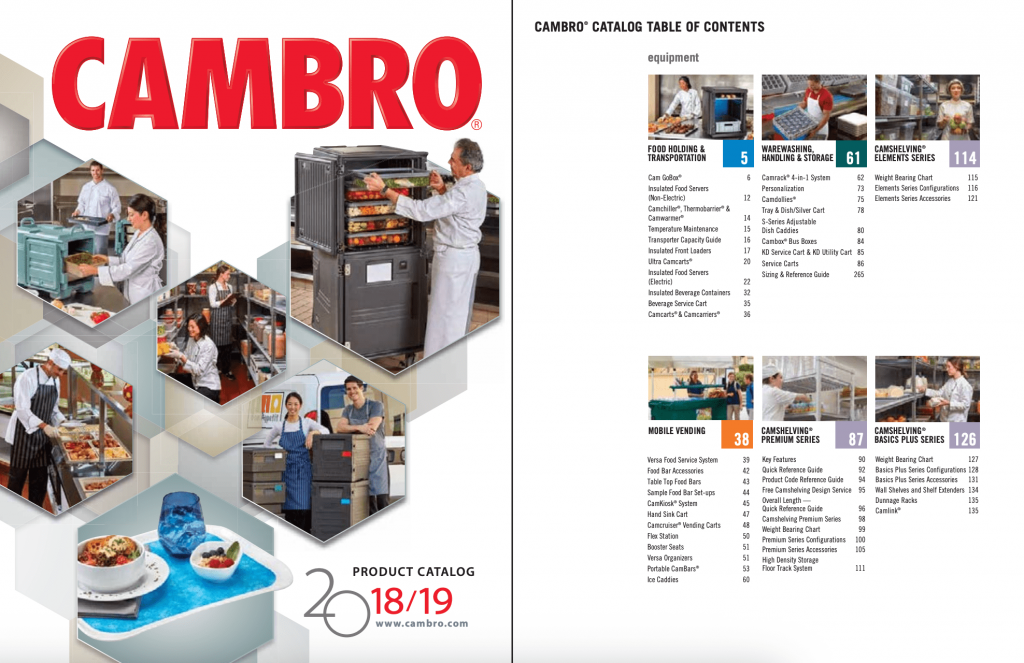
Ad
Unlike the print pieces above, an ad is a placement. It can run in a magazine, on a billboard or as a digital site. Ads are single-purpose and paid for distribution, while flyers, brochures and booklets are owned assets you create and share directly.
Here’s an example of a poster ad that highlights key ingredients and benefits in a calm, inviting layout:

Knowing these differences matters because audiences react differently to each. A booklet signals authority and permanence. A flyer says ‘urgency’. An ad is fleeting and transactional. Confusing one for another doesn’t just blur your message—it wastes your budget.
How to choose between a flyer and a brochure
Match your message with how your audience thinks and where you’ll reach them.
- Message complexityFlyers win when you have one clear point. Brochures win when you need room for story, specs or proof.
- Audience intentFlyers are great at grabbing attention in a crowd. Brochures thrive when people are already leaning your way and want details.
- BudgetFlyers cost less to print and scale. Brochures require some investment because they use heavier paper stock, more folds and more nuanced design layout.
- Distribution methodFlyers “fly” on street corners, college bulletin boards and social channels fast. Brochures perform best in formal interactions such as meetings, consultations, hotel lobbies…places usually people pause and absorb.
If you are still not sure when to use what, go through this decision tree (or create your own with Venngage) to decisively know whether a flyer or a brochure suits you best:
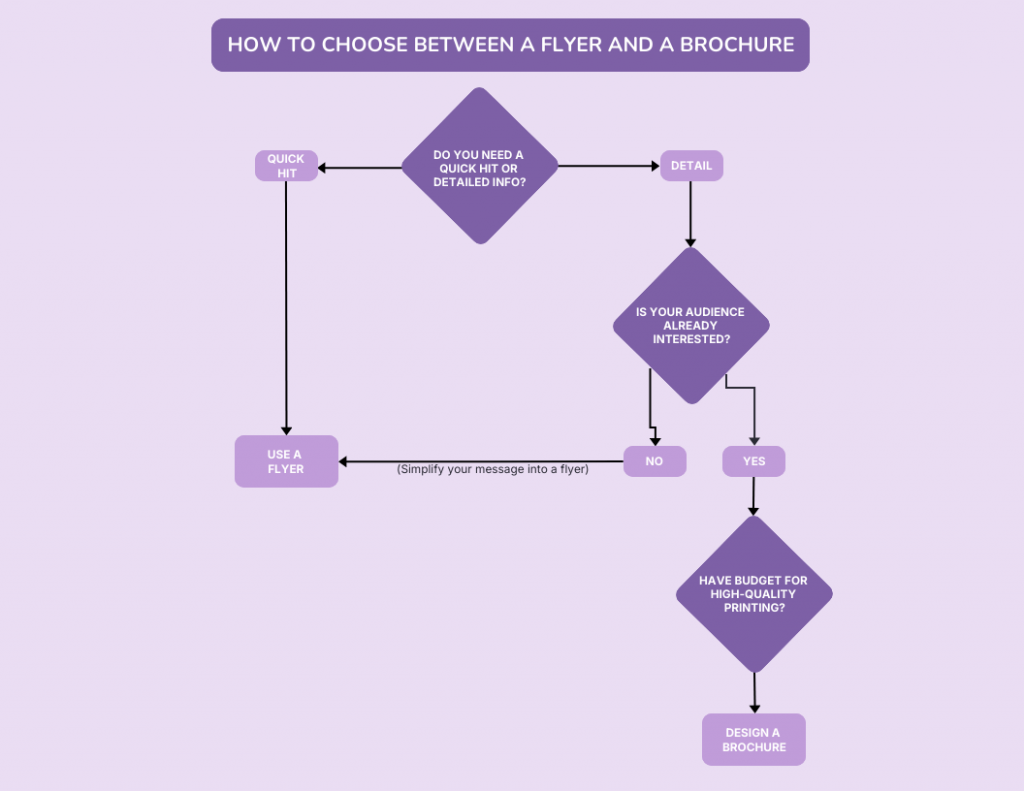
Related: What is a Decision Tree & How to Make One [+ Templates]
FAQs on flyers vs brochures
Let’s clear up the most common questions related to flyers vs brochures.
What should not be included in a brochure?
Avoid big blocks of text, cluttered designs, poor hierarchy and redundant details. Make sure your brochure content is focused, skimmable and visually pleasing for the readers to follow.
Is a brochure always folded?
Not always. By norm, most brochures use a tri-fold or bi-fold design. However, some are bound as multi-page booklets for more detailed content.
Are flyers print ads?
No, flyers aren’t the same as print ads. Flyers are standalone, single-sheet marketing materials. Ads are paid placements in newspapers, magazines or websites.
What is a one-page flyer called?
A one-page flyer is also called a leaflet, handbill, handout or sell sheet. All of them are designed to share quick, easy-to-digest information at low cost.
Choose the right format to make your message stick
Flyers get attention fast, while brochures build trust over time. Both have their place depending on your goal. The key is matching format with intent.
Ready to create the right one for your next marketing campaign? Start with Venngage’s free AI Flyer or Brochure Generator.
